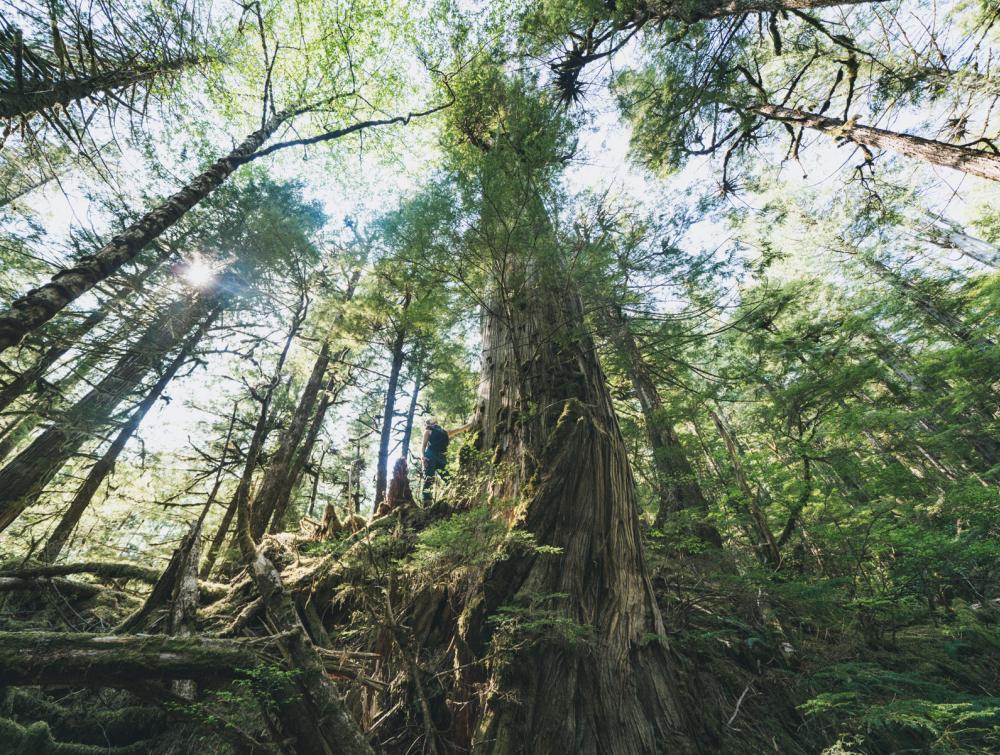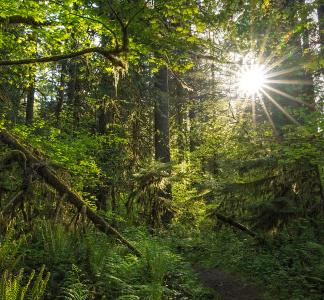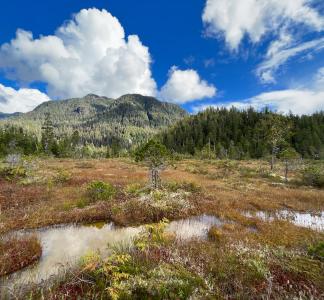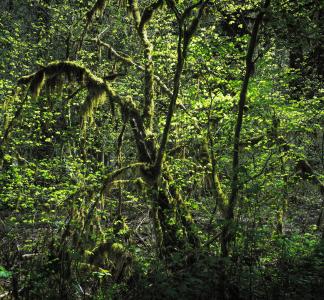"Speak for the trees" with steps to protect older forests

Tongass National Forest, Alaska
Colin Arisman
USDA and Forest Service deliver on Biden plans
Growing up in the late 90s and early 00s, one of my first introductions to the concepts of “conservation” and “deforestation” was The Lorax by Dr. Seuss. If you’re unfamiliar, the colorful children’s book follows a creature called the Lorax who “speaks for the trees” and attempts to stop a greedy logging magnate called the Once-ler from causing total deforestation.
The Lorax is an obvious parable — taught to me as an urgent warning — and one that has felt increasingly prophetic as the world’s forests have shrunk from overdevelopment and climate impacts. The escalating plight led President Biden to issue a directive to the U.S. Department of Agriculture (the parent agency of the Forest Service) last year to inventory the nation’s mature and old-growth forests.
Today, the U.S. Department of Agriculture and Forest Service not only delivered on the president’s directive, but also took a step further with an opportunity for the public to influence forest management policies moving forward.
The public can “speak for the trees”
One of the most significant announcements from the Forest Service is a preview of what’s called an ‘Advance Notice of Proposed Rulemaking’ — in normal human language, that means they will accept public comments to guide an upcoming rulemaking. Specifically, people are able to provide their thoughts about how the Forest Service should manage our forests to boost ‘climate resilience.’
This upcoming rulemaking presents the perfect time for the Forest Service to prioritize protecting the nation’s mature and old-growth forests. As we have highlighted time and time again, these older forests provide an array of vital benefits to ecosystems and communities.
Most importantly in this context, however, is the power these forests hold in mitigating the climate crisis. Older forests are major carbon sinks, capturing and storing large quantities of greenhouse gases. They also bolster environmental resilience against wildfires and droughts, both of which have become increasingly common with climate change. Older, larger trees are better able to absorb water, retain moisture and regulate the climate within the forest. They often have large, dense canopies which mean that dead fallen trees and branches on the forest floor are shaded, damp and less likely to fuel a fire.
More than half of all voters believe that combatting climate change should be a top priority for the government. The Forest Service’s public invitation for input will be a critical opportunity for members of the public to make their voice heard and ensure that our forests are protected. To quote the Lorax, “Unless someone like you cares a whole awful lot, nothing is going to get better. It's not.”
Taking stock of what we have
In addition to the public invitation for rulemaking input, the Forest Service also unveiled a historic national inventory of mature and old-growth forests in the United States. Using newly developed definitions, the Forest Service determined that the public forest estate contains 32 million acres of old-growth and a whopping 80 million acres of mature forest. Those numbers represent 18 percent and 45 percent of all U.S. public forests, respectively.
The release of this inventory delivers on a directive President Biden issued last year, and is an important milestone in conservation of older forests. While many independent observers — including The Wilderness Society — have taken estimated inventories of U.S. forests, this is the first such official inventory developed with federal authority.
The findings also reaffirm what many have suspected: our old-growth forests are vanishing, but abundant mature forests offer a chance to restore the population. If we commit to protecting what old-growth forests remain while also conserving large swaths of mature forests and restoring them to old-growth, we can guarantee that future generations will have even more older forests than we do currently.
To bring things home, once again, “Unless someone like you cares a whole awful lot, nothing is going to get better. It’s not.” There’s no question that our older forests are currently in jeopardy, but if we combine our voices and speak for the trees we can help create a future where children won’t need to read The Lorax as a timely warning.



